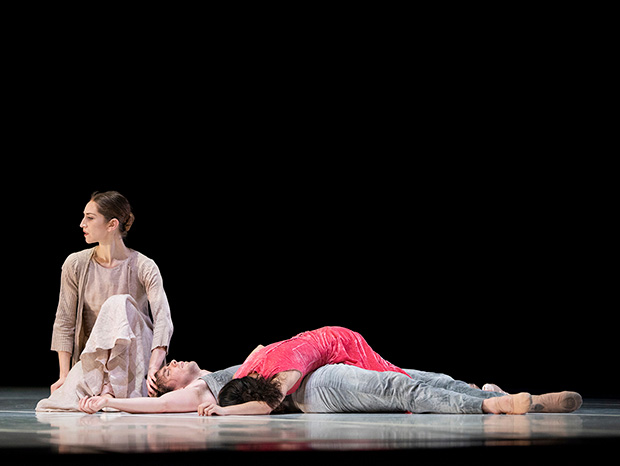
© Erik Tomasson. (Click image for larger version)
San Francisco Ballet
Program 3, In Space & Time: The Fifth Season, Snowblind, Etudes
★★★✰✰
San Francisco, War Memorial Opera House
14 February 2019
https://www.sfballet.org/
This week has been all about newness at San Francisco Ballet (SFB). Program 2 of the season opened Tuesday night and a mere two days later, Program 3: In Space & Time was ready for its debut, on Valentine’s Day. A romantic occasion to be sure, though I wouldn’t characterize In Space & Time’s trio of works as romantic. But there was passion. The Fifth Season was steeped in brooding mystery; Snowblind brought a devastating, impenetrable love triangle to the stage; and Etudes mined the depth of ballet syntax. On their own, each of the three pieces was strong and solid, though I’m not so sure they gel together as a group. The first two ballets had a similar weighty tone, though their choreographic and narrative frame was admittedly different. While lighter in mood and featuring an incredibly large cast, the program’s last ballet takes a long time to establish itself as a finale. I’ve often remarked that SFB’s programming design is one of their strengths, but here it wasn’t quite as successful.
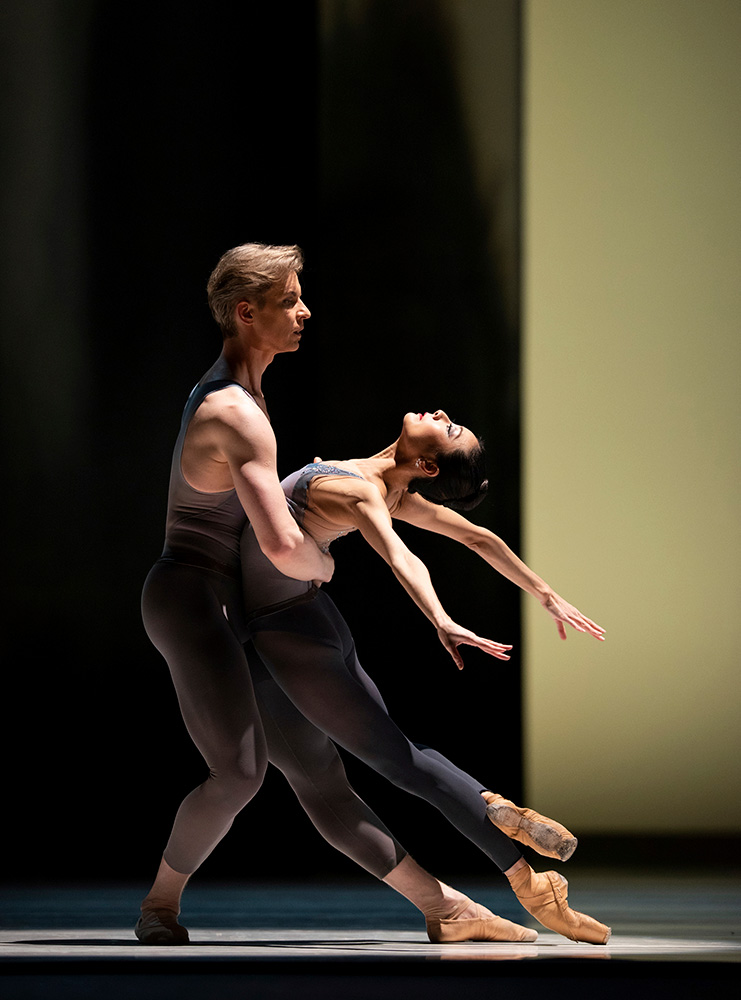
© Erik Tomasson. (Click image for larger version)
Since its premiere in 2006, Artistic Director and Principal Choreographer Helgi Tomasson’s The Fifth Season has made frequent appearances on SFB’s performance slate. An abstract dance suite for six leads and a corps of eight, it is ripe for multiple interpretations. I myself, have had several different responses to the work over the years. And on Thursday night, what I saw was a ballet that was deeply serious. That’s a complement not a critique. I thoroughly enjoyed the somber, solemn quality, something that was clear and consistent from beginning to end. The costumes and hanging scenic panels (both designed by Sandra Woodall) had a steel-hued balayage gradation, casting a smoky, mysterious spell. Karl Jenkins’ low, pulsing, repetitive score added a hypnotic layer to the scene. As the company moved through the various dance and tempo chapters of Jenkins’ suite, the movements remained charged, sharp and occasionally desperate. Arms flew backwards over the head; legs stretched to the nth degree; torsos twisted in dramatic contractions. And the faces followed suit. With the exception of a few moments of levity in the last movement, expressions were angsty, austere and stoic. Season’s mood was locked in and communicated very clearly, though on opening night, the unison, when called for, proved elusive.
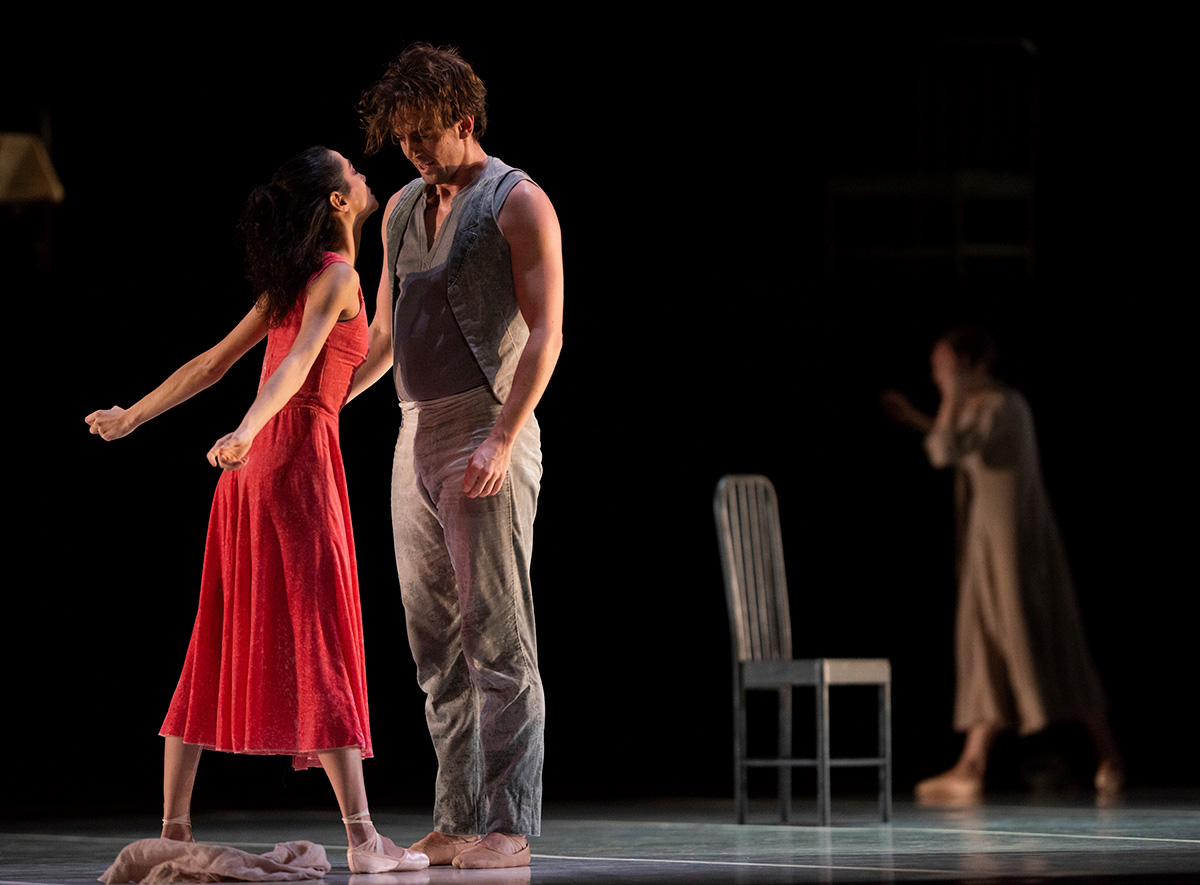
© Erik Tomasson. (Click image for larger version)
If you were anxious for a change in tone after the first intermission, you would have to be patient a while longer. More intense drama was in store with Cathy Marston’s Snowblind, a one–act rendering of Edith Wharton’s 1911 novel Ethan Frome. A narrative which finds the protagonist Ethan (danced by Ulrik Birkkjaer) trapped by circumstance, choice and events, caught between his loveless, bitter marriage to Zeena (Jennifer Stahl) and the possibility of escape with Mattie (Mathilde Froustey). I don’t know that Season and Snowblind were a good fit on the same program, but I was thrilled to see Snowblind returning. It was by far my favorite offering of last year’s Unbound Festival because it captivates on every level: potent storytelling, emotive choreography, fitting design tropes and deep character development.
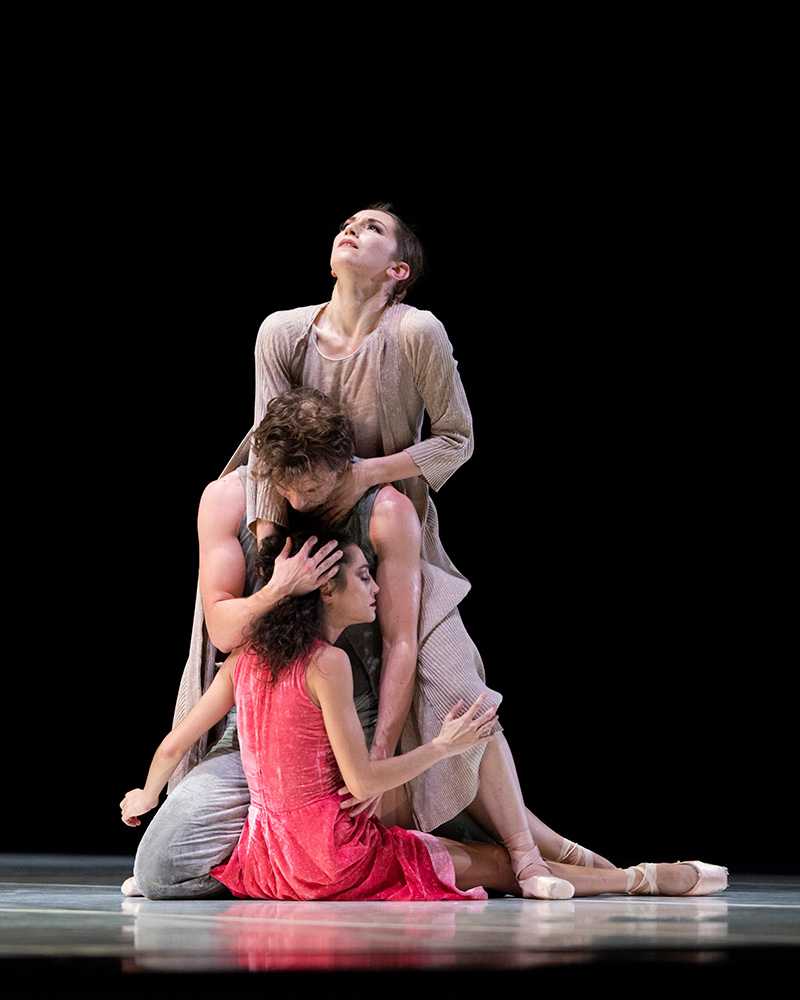
© Erik Tomasson. (Click image for larger version)
I had seen both Birkkjaer and Froustey perform their respective roles at the ballet’s 2018 premiere and their portrayals continued to impress. While appropriately stern and rigid, Stahl’s Zeena also had vulnerability. Through stellar movement and enviable acting, Stahl communicated the desperate grief and sadness lying underneath Zeena’s hardness and harshness. It gave an extra dimension to this complex character. Though Snowblind’s narrative revolves around these three, the fifteen-member chorus also plays an important role, creating a sense of time, place and atmosphere. Throughout the ballet, they periodically enter the scene, weaving, swirling and circling all over the stage. In these moments, the turbulence is palpable. Storms are everywhere – literal winter storms, yes, and the figurative ones brewing in the lives of Ethan, Zeena and Mattie. Patrick Kinmonth’s split-tiered stage design was also particularly poignant and mirrored Ethan’s dilemma – Zeena residing on one level and Mattie on the other.
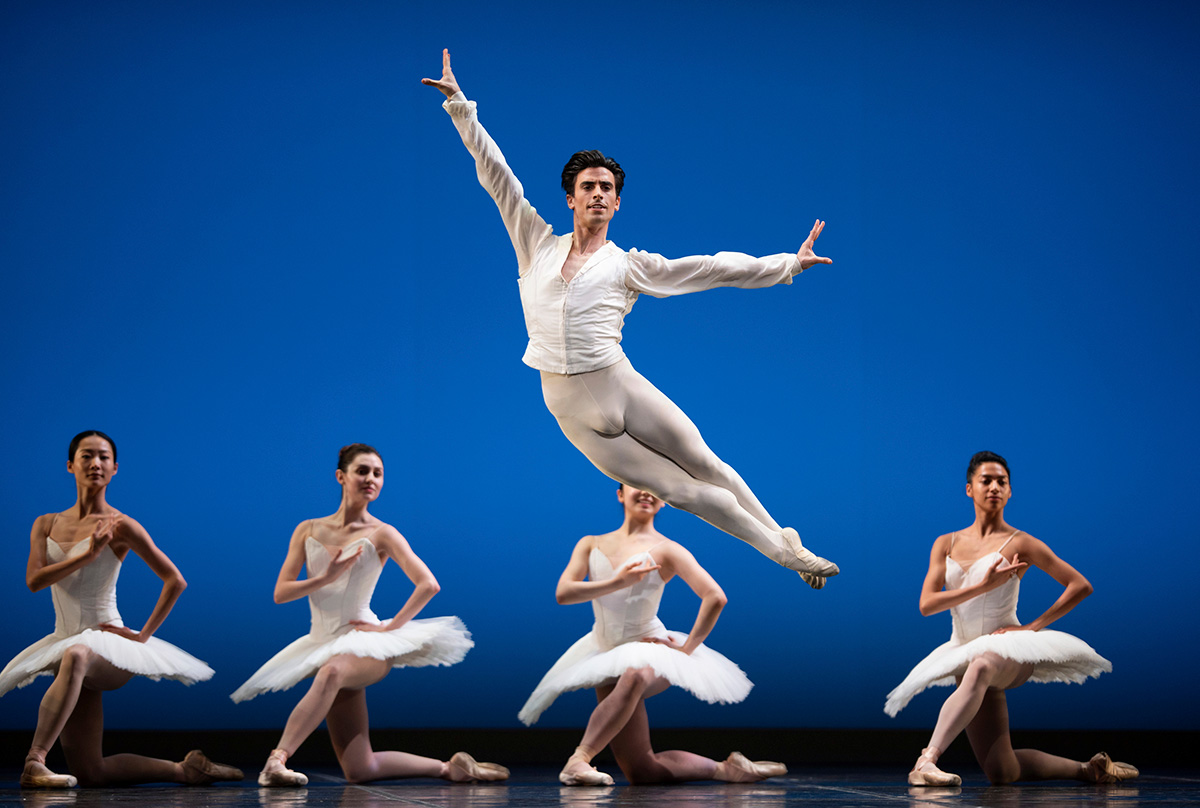
© Erik Tomasson. (Click image for larger version)
After two heady works, In Space & Time closed on a much lighter note with Harald Lander’s Etudes. Choreographed for the Royal Danish Ballet in 1948, and danced by a whopping cast of forty-three, Etudes is a thorough survey of ballet technique. Lander begins at the very beginning, which for ballet means in the studio at the barre. Pure, unfussy exercises unfolded – tendus, frappé, grand battement and relevé en pointe. Then, Etudes transitions to the center portion of class for a review of positions of the body and port de bras, including some very fun old-school Cechetti postures. Slow, adagio sections were next, followed by smaller jumps and eventually full-out combinations. This kind of formal, structural inquiry is right up my alley – a chance to see movement language distilled to its very essence, unencumbered by extra stuff. And to notice its repetition as a sacrament, a ritual, a spiritual practice that is revisited over and over again by dance artists. Having said that, Etudes takes quite a while to reach its virtuosic high point of unison fouettés and grand leaps, perhaps too long. And once it finally arrives in this space, the ‘ta-da’ moments are overdone. It gets a little trick-happy right before the final group phrase (which is truly phenomenal), and for me, loses a measure of elegance.












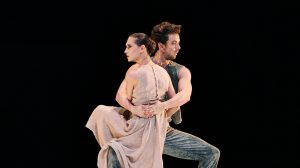
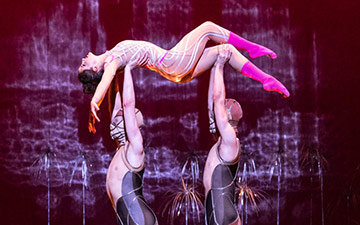

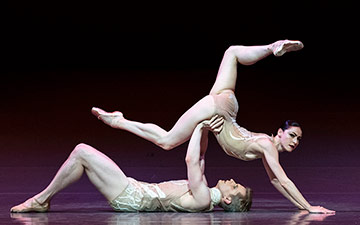

You must be logged in to post a comment.